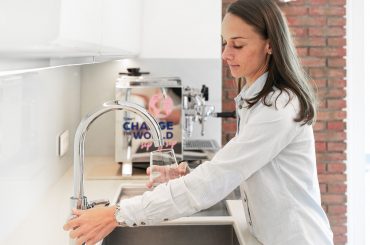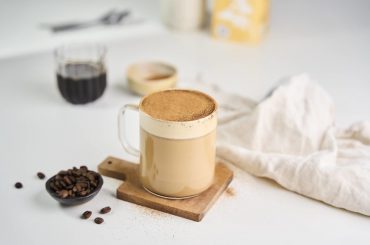Almost 20 years since the first Hario V60 was launched into the market, it’s still the favourite dripper of both beginner home baristas and professionals taking part in coffee competitions. It is described as the most objective, and the coffee brewed in it, as perfectly balanced and perfectly clear. There are many brewing guides and tutorials online, we have also went live to talk about brewing in Hario V60. Now let’s try to dive a little bit deeper!
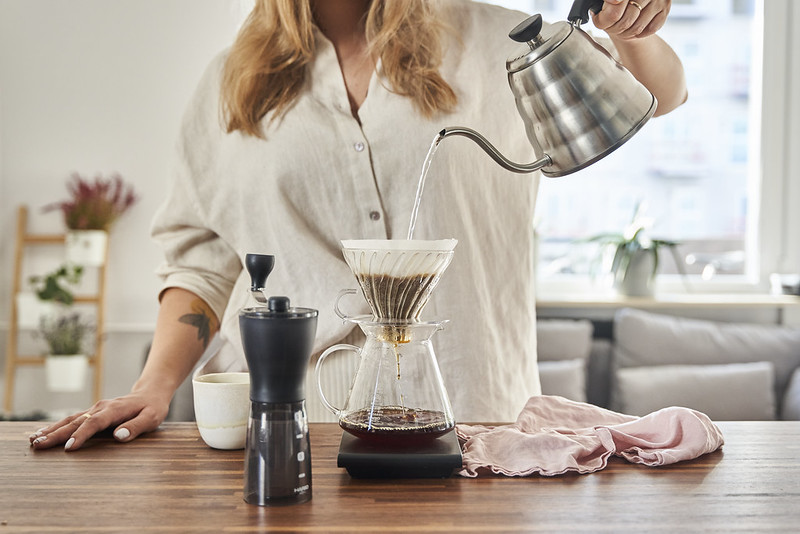
Hario – Technicalities
There are several technical solutions to Hario V60 which are responsible for the brewing process and the quality of the brew. First of all, the conical shape of the dripper with a considerable angle allows for a better distribution of coffee inside the device (different than accessories with a cross section closer to a trapezium, like Clever or the Gabi Master) and for longer contact of water dripping towards the middle with ground coffee. Second of all, spiral ribs inside the dripper form a layer of air between the filter and the device, which prevents adhesion, allows for appropriate air circulation and influences the speed of water flow. Thanks to these functionalities, combined with a relatively uncomplicated brewing technique, Hario drippers stole everyone’s heart.
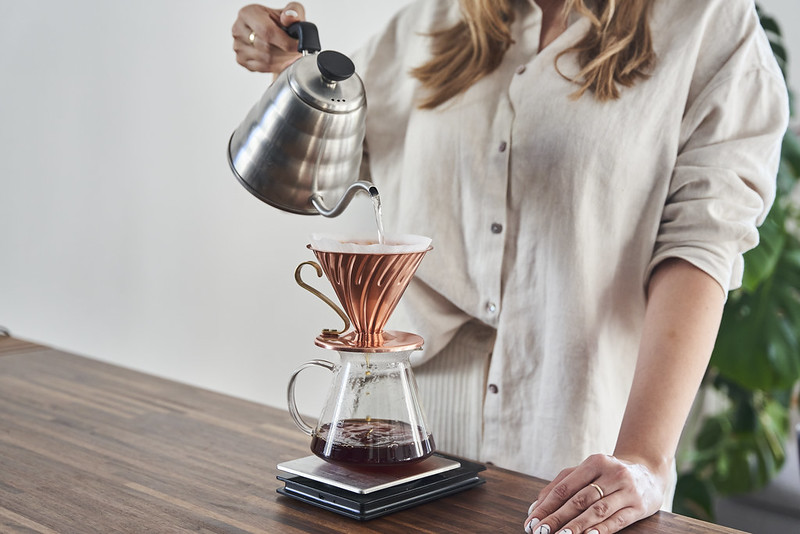
Impact of Extraction on the Taste of Coffee
Extraction, that is coffee brewing, is about dissolving substances from coffee in water. The more effective the process is, the more particles will dissolve in water and make the brew richer. The type of extraction occurring in V60 is called percolation and it consists in water washing out such compounds from the ground coffee, as: volatile aromatics, sugars, organic acids, caffeine and so on. These desirable compounds that shape the taste of the brew are about 30% of the bean mass, the rest are insoluble grounds.
When you pour water over ground beans in a dripper, you wash out more and more compounds from the beans. Some compounds dissolve in water easily and quickly, others need more time. So, at the initial stages of the process, the brew is dominated by easily soluble acids. On the next stages, the brew is enriched with sugars, aromatics and other substances that profile its flavour. At some point, you get to the sweet spot, when you need to stop the brewing. If you don’t, the beans will give away substances responsible for bitterness and dry, astringent aftertaste, as well as unpleasant tartines. To sum up, the key to coffee brewing is finding the mythical sweet spot (over which you have a relatively large control), where it tastes best.
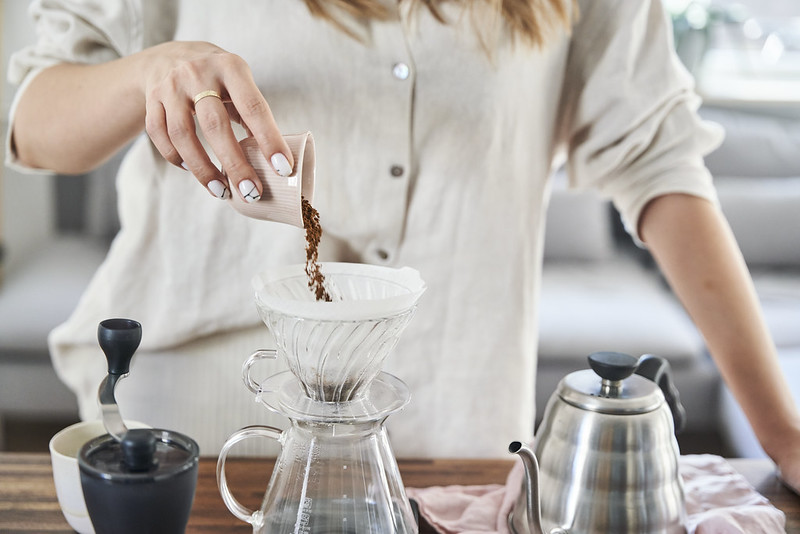
Factors Affecting Extraction
It’s true that brewing can be easier and more convenient with the help of such additional accessories as a gooseneck kettle or a precise scale with a timer. However, even the most lavish accessories won’t take you far if you don’t know as much as you can about all the variables of the process.
Ratio
Ratio, that is proportions of coffee to water used in the brewing process, are paramount to extraction. Increasing the dose (amount of coffee) makes it harder for water to wash out the desired components, so it’s harder to extract coffee properly – it might be hard to grasp while learning the ropes of brewing. If you put too much coffee into the dripper, the brew will be under extracted, flat, and at the same time denser. If you put too little coffee, the brew will be fully extracted but watery.
So, when you’re deciding on the best ratio, you need to find a perfect balance between the concentration of coffee and its extraction. The standard ratio recommended by SCA is 6g of coffee to 100 ml of water.

Grind Size
Coffee extraction is possible because the beans are ground. Grinding increases the contact surface area of the beans with water and facilitates washing out the desired compounds. The rule is again very simple: the finer you grind your coffee, the more extracted it will be. Coarse grind means smaller extraction.
Setting the grinding size, you want to find the finest grind that won’t cause over extraction of coffee. You need to consider channelling, which will occur when the grind is too fine. This phenomenon makes coffee under extracted and over extracted at the same time, which shows in visible holes at the surface of ground coffee bed. If channelling occurs, you need to pay attention to coffee distribution within the filter, grind size, and, in some cases, to the technical condition of the grinder.
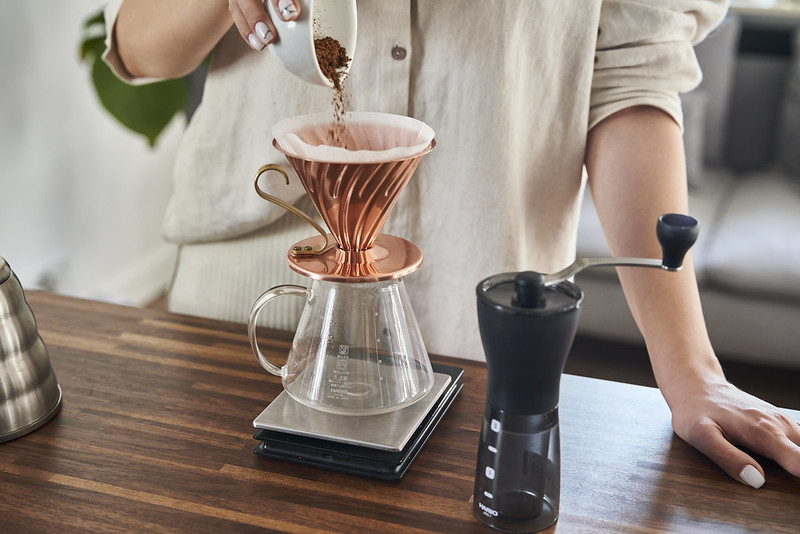
Water
Water quality is just as important for the final taste of the brew as the quality of beans. Drip coffee is 98% water, and you must remember that well. The water feature which keeps baristas awake at night is its TDS (Total Dissolved Solids). Perfect water for brewing coffee has low, but not zero, mineral content. Too high mineral content makes it impossible for the coffee to dissolve in water, which is already ‘saturated’ with the compounds it contains. Optimum range of TDS for water used for coffee brewing is 50 – 150 ppm. There are special systems (e.g. reverse osmosis), which give you control over the TDS value of water. If you don’t have them, you can brew with spring water with TDS of 120–200 ppm. You can read more about water in two of our blog posts: WATER – the Main Ingredient of Coffee, Part 1 and WATER – the Main Ingredient of Coffee, Part 2: Filtration.Water temperature is also an important factor in the brewing process. The higher the temperature, the more energy the process gets and the more extracted the coffee will be. Water temperature not only affects the level of extraction, but also the sensory profile of coffee, because various aromatic compounds dissolve at a different temperature. The water temperature for V60 is about 95-97˚C.
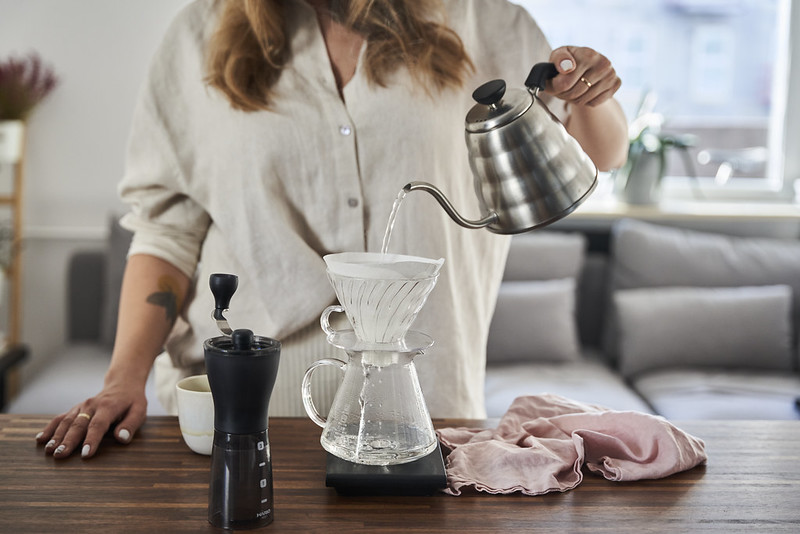
Time
Brewing time is another factor that affects the level of extraction – the longer you brew, the higher the extraction. Optimum time for V60 is 2–4 minutes. You can change it with the dose (the more coffee, the longer brewing time), grind size (the finer the grind, the slower the brewing) and technique.
Technique
Brewing technique also affects extraction. Pre-infusion time, the way of pouring water, mixing or no mixing, filter choice or your dripper material – all this will shape the sensory profile of the final brew.
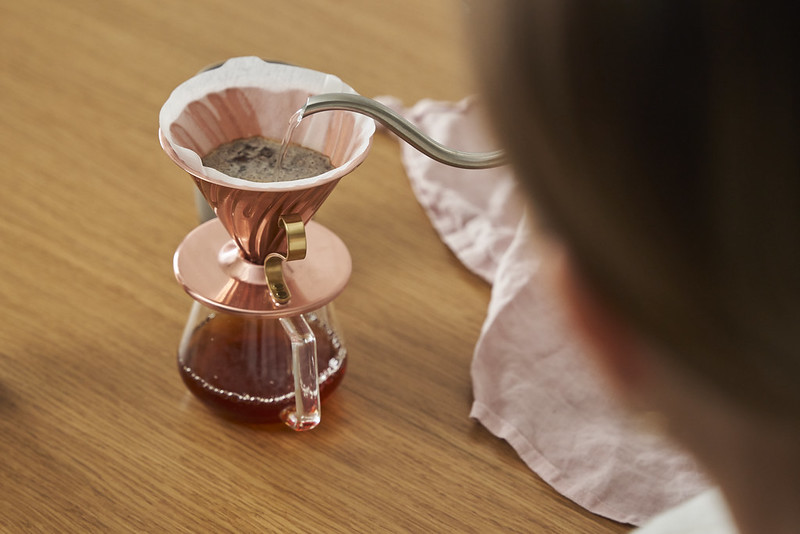
Pre-infusion (blooming) is preliminary brewing. The aim of pre-infusion is to raise the level of extraction through soaking ground coffee in a small portion of water. It allows for better penetration of coffee structure with water and, consequently, more even extraction. The standard amount of water equals 2-3 times the mass of coffee. For example, if you brew 20 g of coffee in a dripper, you need to use about 50 g of water for pre-infusion in about 30 seconds.
When you’re in control of how fast and how often you pour water over coffee in a dripper, you’re in control of the brewing time. Pouring water in smaller portions / in a slower stream, you extend the extraction time. For example, in order to brew drip coffee with 300 g of water, you can do it in many ways – when you pour all 300 g at once, you’ll have the shortest extraction time, and when you pour 60 g of water over coffee five times, the brewing will take much longer.
Mixing also increases extraction time, but you must remember that it negatively affects repeatability. You can mix in a number of ways – delicately swirl the whole device in a circular motion, carefully stir the coffee in the filter with a stick or a spoon. If you want this method to be used in your café, you need to make sure that every barista will do it exactly the same way. You can find many examples of recipes online that will show you how to brew coffee in a specific dripper, even master recipes. You need to remember, though, that the best results come from the understanding of coffee and considering the best ratio or grinding every single time. Brewing in Hario V60 is an art of balance. If you truly understand it, it will reward you with a cup of delicious coffee. Good luck!


